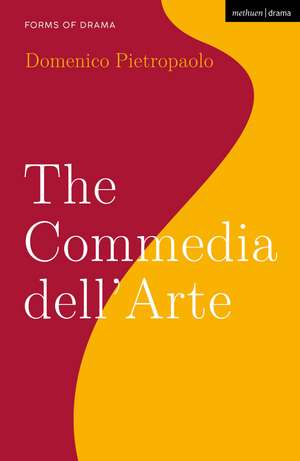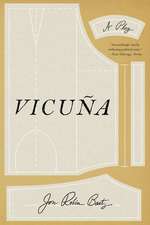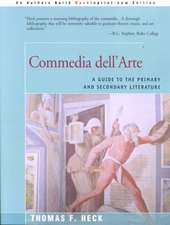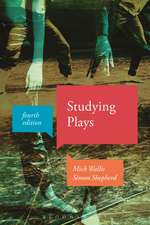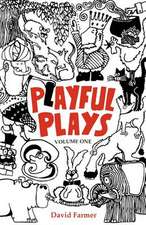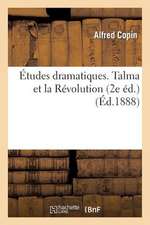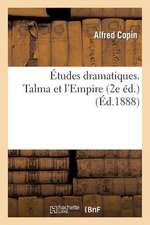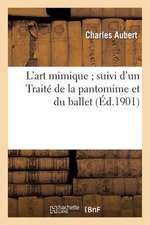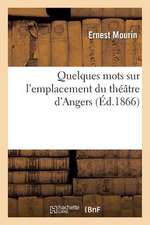The Commedia dell’Arte: Forms of Drama
Autor Professor Domenico Pietropaolo Simon Shepherden Limba Engleză Paperback – 10 aug 2022
| Toate formatele și edițiile | Preț | Express |
|---|---|---|
| Paperback (1) | 107.24 lei 3-5 săpt. | +26.59 lei 4-10 zile |
| Bloomsbury Publishing – 10 aug 2022 | 107.24 lei 3-5 săpt. | +26.59 lei 4-10 zile |
| Hardback (1) | 352.30 lei 6-8 săpt. | |
| Bloomsbury Publishing – 10 aug 2022 | 352.30 lei 6-8 săpt. |
Din seria Forms of Drama
- 19%
 Preț: 112.72 lei
Preț: 112.72 lei - 19%
 Preț: 112.72 lei
Preț: 112.72 lei - 19%
 Preț: 112.72 lei
Preț: 112.72 lei - 19%
 Preț: 112.72 lei
Preț: 112.72 lei - 19%
 Preț: 105.89 lei
Preț: 105.89 lei - 18%
 Preț: 99.75 lei
Preț: 99.75 lei - 18%
 Preț: 113.05 lei
Preț: 113.05 lei - 8%
 Preț: 112.61 lei
Preț: 112.61 lei - 11%
 Preț: 403.38 lei
Preț: 403.38 lei - 14%
 Preț: 112.84 lei
Preț: 112.84 lei - 20%
 Preț: 188.48 lei
Preț: 188.48 lei - 24%
 Preț: 188.82 lei
Preț: 188.82 lei - 20%
 Preț: 188.48 lei
Preț: 188.48 lei - 28%
 Preț: 404.87 lei
Preț: 404.87 lei - 19%
 Preț: 526.51 lei
Preț: 526.51 lei -
 Preț: 248.52 lei
Preț: 248.52 lei
Preț: 107.24 lei
Preț vechi: 123.39 lei
-13% Nou
Puncte Express: 161
Preț estimativ în valută:
20.53€ • 22.30$ • 17.25£
20.53€ • 22.30$ • 17.25£
Carte disponibilă
Livrare economică 01-15 aprilie
Livrare express 15-21 martie pentru 36.58 lei
Preluare comenzi: 021 569.72.76
Specificații
ISBN-13: 9781350144187
ISBN-10: 1350144185
Pagini: 224
Ilustrații: 10 bw illus
Dimensiuni: 129 x 198 x 17 mm
Greutate: 0.27 kg
Editura: Bloomsbury Publishing
Colecția Methuen Drama
Seria Forms of Drama
Locul publicării:London, United Kingdom
ISBN-10: 1350144185
Pagini: 224
Ilustrații: 10 bw illus
Dimensiuni: 129 x 198 x 17 mm
Greutate: 0.27 kg
Editura: Bloomsbury Publishing
Colecția Methuen Drama
Seria Forms of Drama
Locul publicării:London, United Kingdom
Caracteristici
Gives readers an outline of its evolving ideological discourse, which, at different times, included social reform as well as conservatism and the alienation of ethnic minorities in complicity with its audience
Notă biografică
Domenico Pietropaolo is Professor of Italian and Drama at the University of Toronto, Canada. His publications include Pragmatics and Semiotics of Stage Improvisation (Methuen Drama, 2016), The Baroque Libretto (co-authored with M.A. Parker, 2011), and, as editor, The Science of Buffoonery: Theory and History of the Commedia dell'Arte (1989).
Cuprins
List of FiguresSeries PrefaceAcknowledgementsIntroductionPart 1: Form, Dramaturgy and Content of Early Commedia dell'Arte1. The First Professionals2. Elements of Form: Characters and Dramatic Actions 3. Elements of Form: The Scenario, Lazzi, Improvisation4. Commedia dell'Arte and Ottonelli's TheologyPart 2: Innovations in the 18th Century5. From Scenario to Script: Riccoboni and Goldoni6. Riccoboni's Commedia of Civic Responsibility7. The Commedia dell'Arte in Goldoni's Reform8. Gozzi's Fable Form: A New Horizon of ExpectationsPart 3: Adaptations and Revivals 9. Commedia dell'Arte and Grotesque Dance: Gregorio Lambranzi10. Pulcinellate and Harlequinades11. Commedia dell'Arte in the Opera Libretto 12. Continuity and Transformation in the 20th CenturyReferencesIndex
Recenzii
In this fascinating study, Domenico Pietropaolo enriches and deepens our knowledge of the commedia dell'arte throughout its early history and golden age in Italy (1560 to 1630s). His highly readable text engages the reader with its masterful weaving of theory and practice as he carefully lays out the dramaturgical and aesthetic features which defined the commedia dell'arte during its historical evolution in both north and south Italy, and beyond. Building on this comprehensive foundation, Pietropaolo offers brilliant readings of 18th-century play texts and performances by such genius playwrights as Goldoni and Gozzi whose opposing reforms teased out the complex relationships between improvised and scripted forms. The final section pays tribute to the commedia dell'arte's enduring legacy by referencing some of its adapted dramatic forms, such as Lambranzi's grotesque dance, the Neapolitan Pulcinellata, the English Harlequinade, and the Opera. The inclusion of key 20th-century performers and companies dedicated to keeping arte traditions alive attest to its ongoing presence. Pietropaolo's The Commedia dell'Arte is essential reading for theatre scholars and theatre lovers alike.
